Unraveling a True Crime Mystery in Under the Banner of Heaven
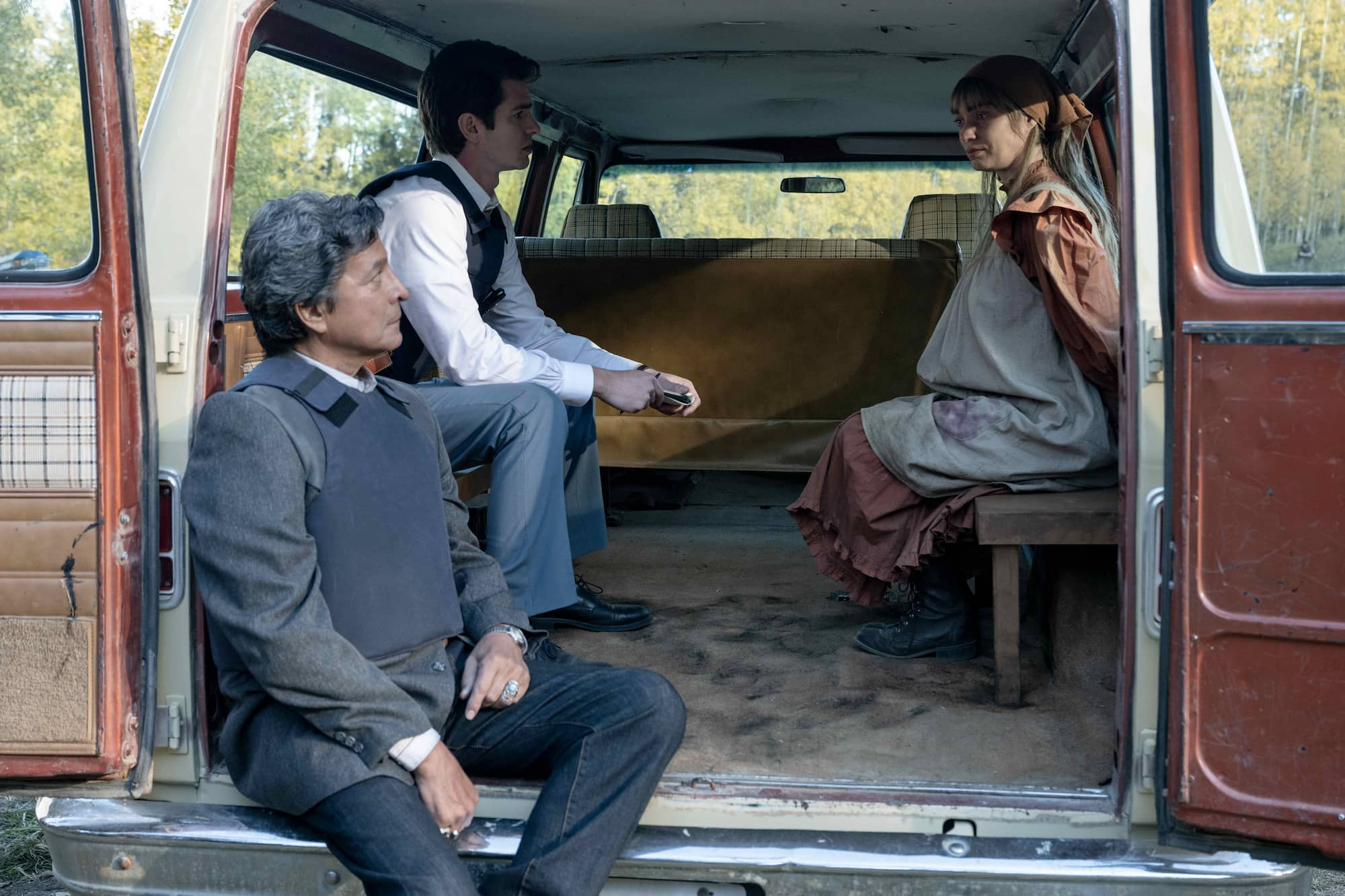

Our last article explored the complexity and densities of relationships in Apple TV's Slow Horses. We are continuing that exploration by generating a full relationship analysis of FX's Under The Banner Of Heaven.
To examine how the mystery is shaped in each episode we'll be looking at the relationships of characters in the show as well as each character's relation to past and present. We're going to walk through the evolution of the plot in each episode – but to start we'll spoil the ending and show you the chart representing the entirety of Under the Banner of Heaven.
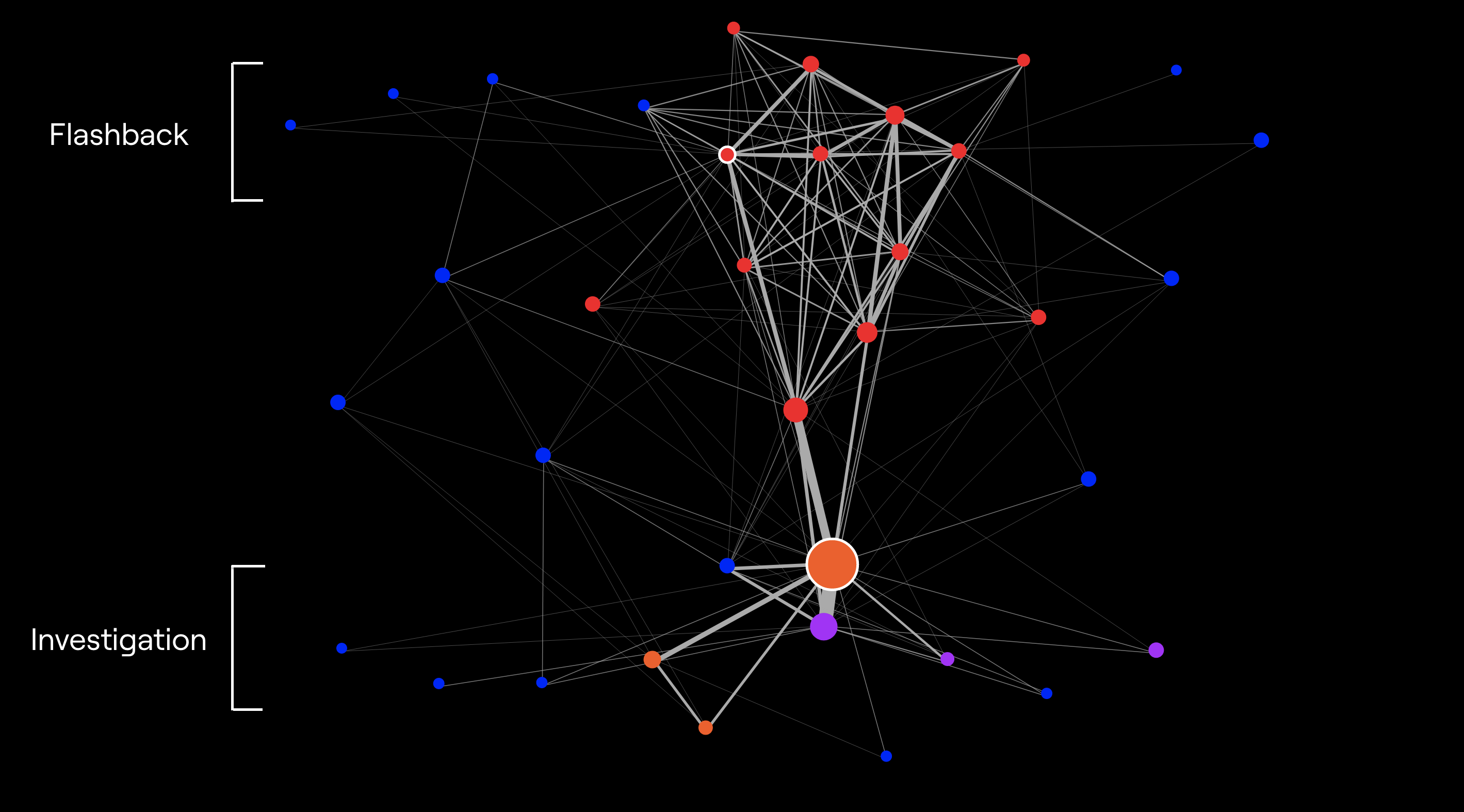
That probably doesn't give you much information, especially if you haven't seen the show. Like any good mystery the fun is in the build up. so let's start by understanding what the chart is trying to show by looking at one scene of the show.
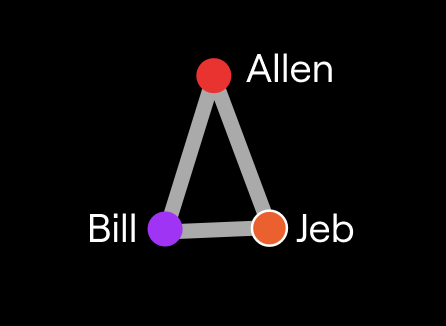
This is a scene where the main detectives Jeb Pyre and Bill Taba are interrogating Allen Lafferty, the husband and father of the murder victims Brenda and Erica. These charts represent information in 3 different ways:
The connections represent the relationships between characters.
The color of each dot represents which group the character is in
Red: Lafferty Family
Orange: Pyre Family
Purple: Police
Blue: Other characters
Finally, vertical position represents how much a character exists in flashbacks or in the present day investigation.
For example the victim of the show's case, Brenda, only can appear in flashbacks. She will always be found near the top of the chart. (Due to her significance she is highlighted in white.) The two detectives Jeb and Bill are the focus of the investigation and will hold down the bottom of the chart. Characters like Allen Lafferty, those who bridge the gap between the events being investigated and the investigation itself, will be found in the center.
Using Lumiere we can extract which characters appear in each scene and by using some coding (both definitions, marking scenes as past or present along with a bit of programming to format the data) we can generate these charts for an entire show.
There's not a great deal of information to be gleamed in one scene. Let's zoom out and look at each episode.
The connection between the past and present is where a mystery derives plot. Each episode has a unique and evolving way of bridging this gap which defines the shape each episode takes.
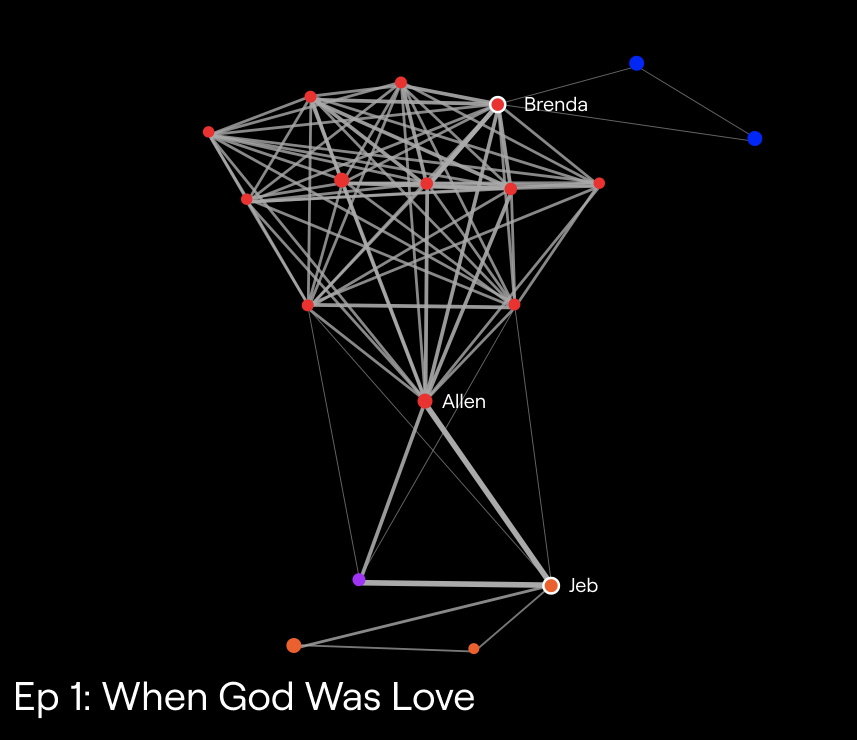
Episode 1: When God Was Love focuses on establishing the dynamics of the show's main families – mainly on the large Lafferty clan and the 6 brothers (Dan, Ron, Jacob, Samuel, Robin, and Allen) who come to control it. The victim of the murder Brenda's and the main detectives Jeb's families are also highlighted. Each family shows us a different version of a Mormon family.
One note – these charts don't represent the children in any family. Children are plentiful in the Lafferty family but do not have many speaking roles and don't have connections outside of their family.

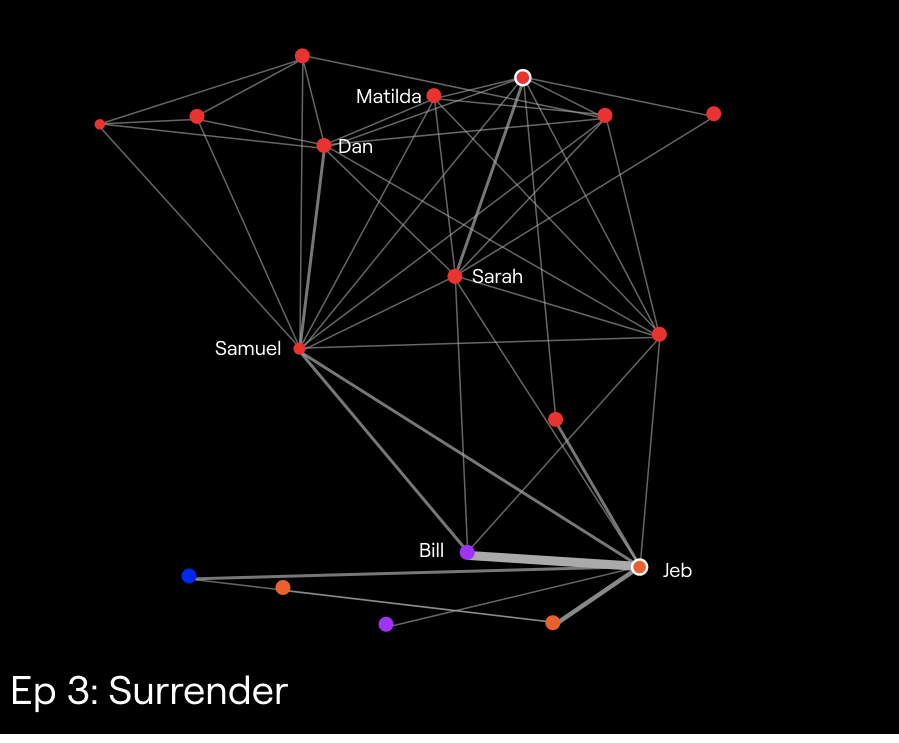
Episode 2 and 3: Rightful Place and Surrender narrows the focus of the Lafferty family to the brothers and their wives. Allen continues to tell the detectives Brenda's story while two brothers, Robin and Samuel, are interrogated in the present day. Each reveal details of the radicalization that occurred as the brothers took control over the family from their father.
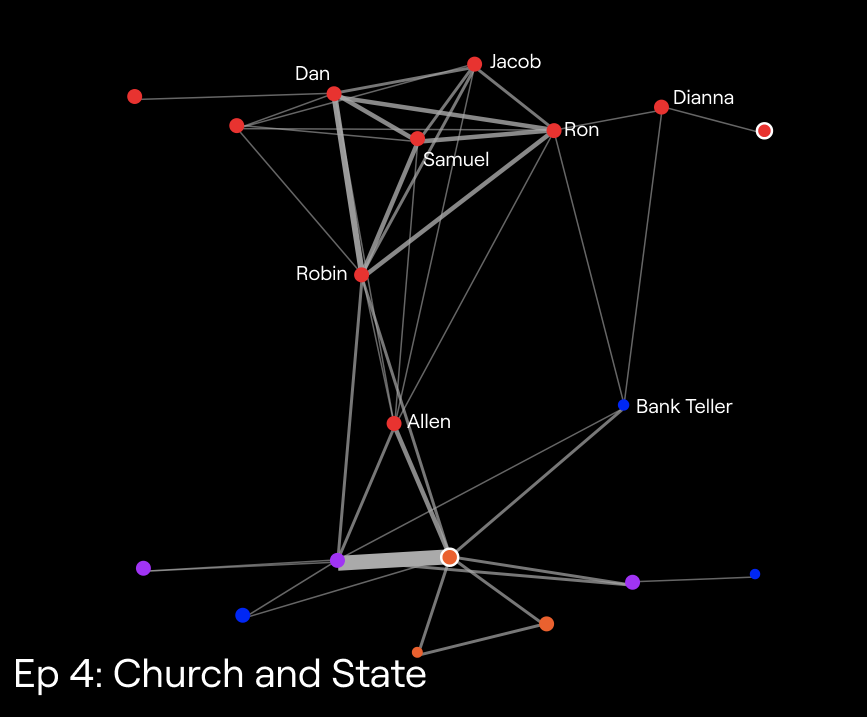
Episode 4 Church and State goes even deeper into the relationship of the six brothers and their move towards fundamental Mormonism. At the same time the present day investigation expands beyond questioning the brothers. A bank teller reveals that the eldest brother, Ron's, wife Dianna is trying to get the the attention of Mormon leadership to stop the family's radicalization with the help of Brenda. This scene is clearly visible on the chart and foreshadows the focus of the next episode.
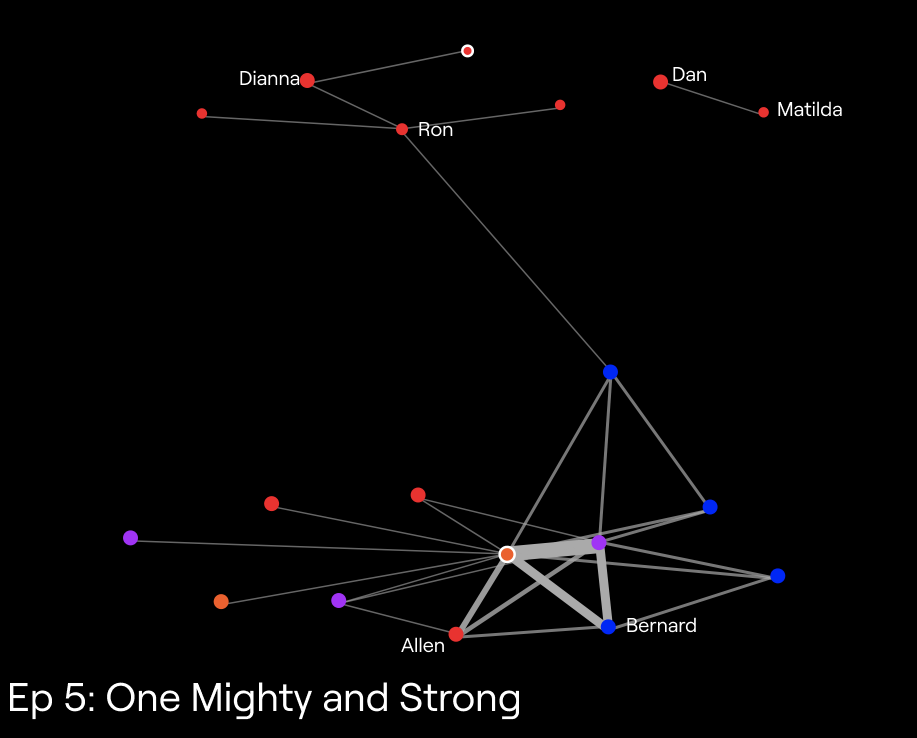
Episode 5: One Mighty and Strong, as the name suggests, is about the personal radicalization of the eldest brother Ron. One aspect of the show not present on these charts is the early history of Mormonism told by Allen and the other brothers to Jeb and Bill. The scenes of Joseph Smith and his followers help in building the themes of each episode. In episode 5 Ron's power grabs are paralleled by a side plot of Brigham Young after the execution of Joseph Smith. One more connection to the past is interrogated – this time the member of the radical study group formed by the Lafferty's: Bernard. Despite finding more witnesses the present and past are the most disconnected in this episode. One reason is that the detectives find evidence to connect to the past. There is a disconnected island with the couple Dan and Matilda that is only revealed through a letter.
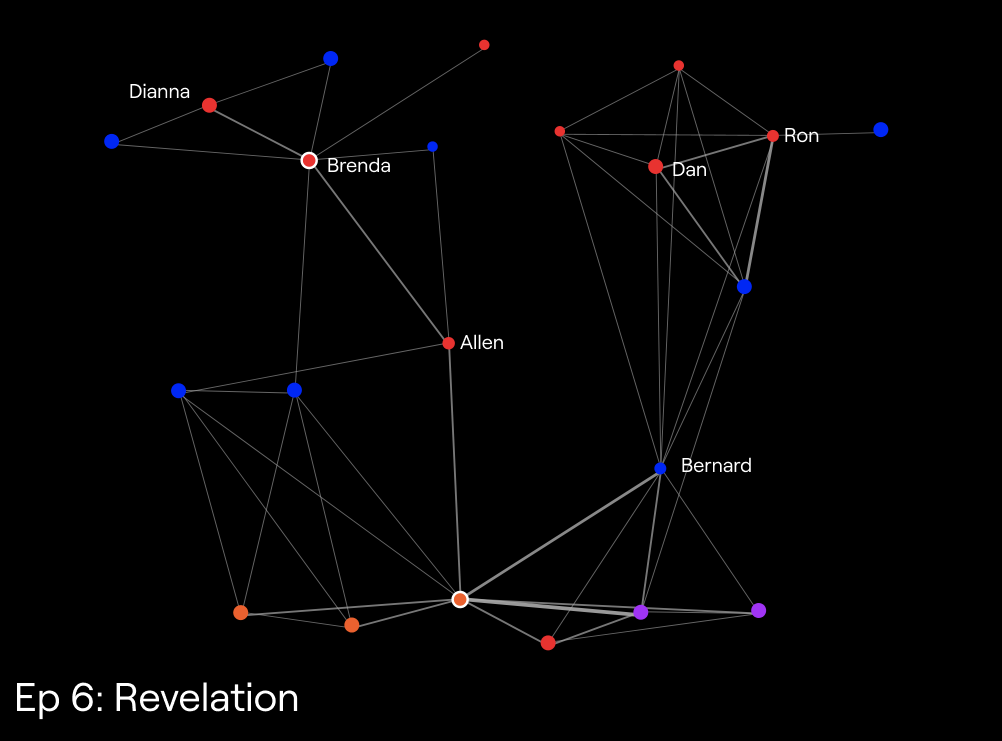
Episode 6: Revelation has the most interestingly shaped chart. Two different story lines play out. One in the pursuit of Ron and Dan by the police with the assistance of Bernard and the other the continued struggle against the brothers by Dianna and Brenda told by Allen. At the end of the last episode Dianna left Ron, cementing a divide between the men and women in the Lafferty family. Jeb sits in the very center of this plot divide which perfectly illustrates the character's tensions between family and work and his eroding faith that boil over in this episode.
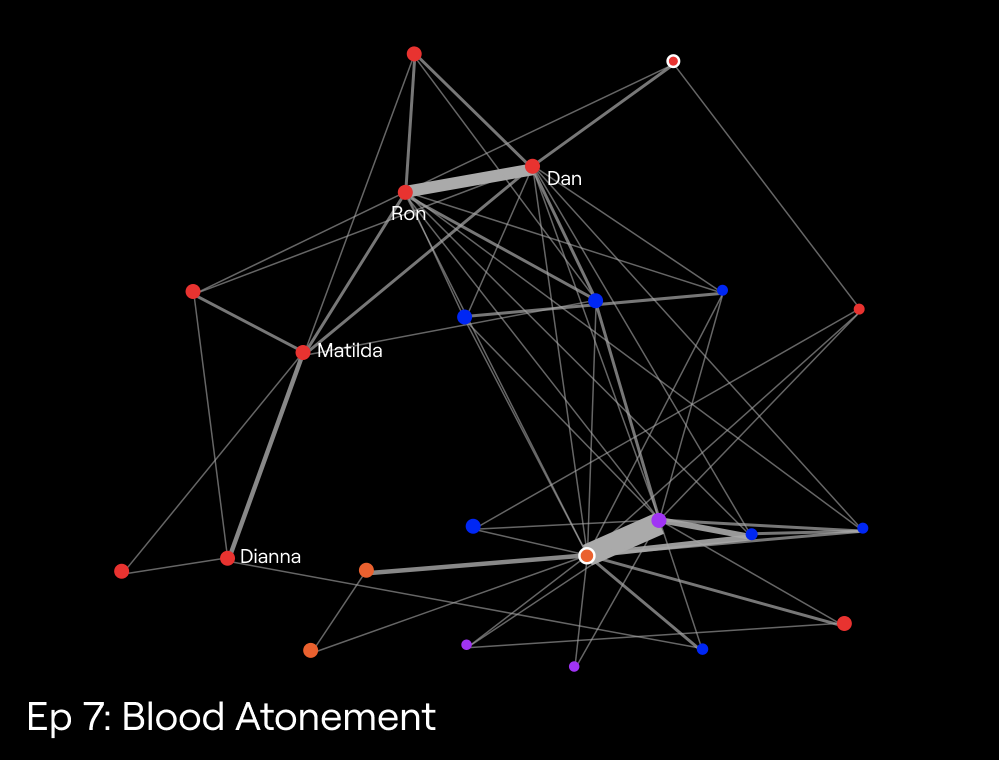
Finally, Episode 7: Blood Atonement where past and present collide in the murder of Brenda and her child by the hands of the fully radicalized Ron and Dan. The depravity and evil of the two brothers is contrasted with the bravery and strength of Dianna as she saves Matilda from the Lafferty house. The chart forms into a loop, illustrating the collision.
This visualization very clearly shows the fracturing on the Lafferty family in each episode. What began in the series as a large and tight knit family becomes a broken and fragmented mess by the end.

What's much less clear is the personal struggles of Jeb and his family. The two orange dots of Jeb's wife Rebecca and mother Josie are nearly ever present across the series. As important as what characters are sharing a scene is what the characters feel about each other, who are strangers and who have known each other for years, who is in control in the scene or is there a conflict. This extra, often vital detail is something Lumiere can help solve through AI or viewer reactions. However, even with this simple setup, you can still see Jeb's web of connections grow as he moves more distant from his family.
Putting it all together again we can now look back on the entire show as a detectives investigation of a complicated family and the community that they share.

If you want to look deeper into any of the charts we have created an interactive version that you can explore. Try to solve the entire show, or look at each episode and find the connections yourself. You can also look at the unraveling of the Lafferty family only.
There is more to discover with this way of abstracting relationships of characters media, one thing that we've learned is the more complex and plot-driven media is, like Under the Banner of Heaven, the more details and discoveries can come from this process. A sitcom for example will look much the same from episode to episode with no discernible shape or flow. A mystery miniseries was exactly the evidence we needed to crack the case of character relationships.
Share this Post
Build new levels of engagement and connection with your viewers - get in touch to find out more about Lumiere and our insights solutions.